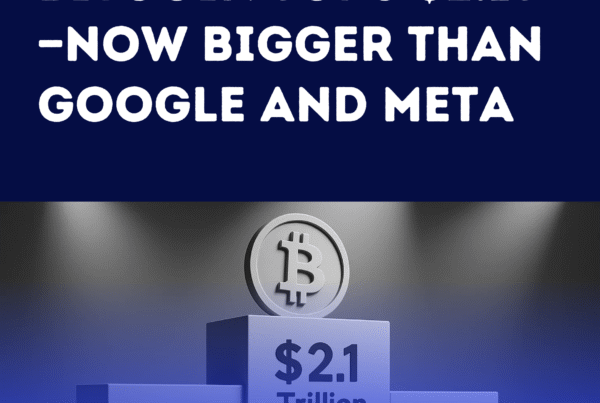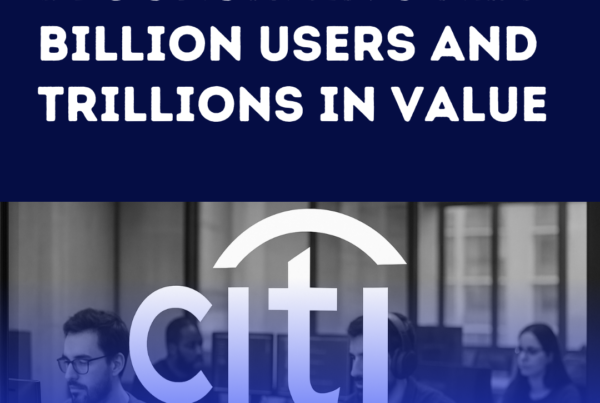
The year 2024 is set to be an exceptional period for the digital assets and blockchain sector. Throughout most of 2023, there were a number of key developments that will now shape the future of the crypto industry in the coming year and even the next decade.
The US has often been criticized as a jurisdiction where there is a noticeable lack of regulatory clarity. However, this year we saw the US Courts step in and meaningfully intervene so that the crypto ecosystem can move forward in a sustainable manner.
For instance, enterprise blockchain firm Ripple scored a big win against the US Securities and Exchange Commission (SEC). As widely reported, this landmark case focused on the question of whether XRP may be considered a security (as defined by the super-old Howey Test). Of course, Ripple had argued against the SEC’s assertion that the digital asset is a security. Without going into too many details, this case basically put the SEC in check and emphasized that the regulator must focus on acting fairly (and within its remit) in the future.
UK, Europe Takes Progressive Approach Towards Crypto
In addition to these unprecedented regulatory developments, digital asset firms such as Coinbase (NASDAQ:COIN) have been dealing with their own issues with the SEC and other US regulators. During 2023, Coinbase also continued to be quite vocal about the more progressive approach to crypto regulations and innovation seen in the United Kingdom and other European nations, along with various other jurisdictions worldwide. Coinbase and other crypto firms have also said on numerous occasions that the US risks falling behind when it comes to embracing the latest crypto technology and its benefits.
However, the vast majority of crypto projects have not really offered any meaningful value for businesses or consumers. Instead, there have been a large number of scams, many forms of fraudulent/abusive activities, and damaging security breaches that have resulted in losses of billions of dollars.
But there are a few initiatives like those supporting the development of Bitcoin (BTC), Ethereum (ETH), Cardano (ADA), Solana (SOL), Polygon, Avalanche (AVAX), Chainlink (LINK), and a few other promising projects. Despite some positive momentum, it remains clear that besides BTC and ETH, there is still not much appeal to having a more diversified digital asset portfolio, even though certain altcoins have been gaining investors’ attention (as reported regularly by CoinShares).
Global Grassroots Crypto Adoption Declines
Interestingly, global grassroots crypto adoption is down, according to a comprehensive report released by Chainanalysis earlier this year. Although there’s been a significant recovery since the struggles of late 2022, around the time FTX collapsed in spectacular fashion, grassroots cryptocurrency adoption was still well off its all-time highs, the mid-2023 report from Chainalysis had revealed.
This decline in crypto transactions and overall activity could be attributed to broader socioeconomic issues, higher levels of inflation and maybe even the cost-of-living crisis.
However, the mid-year Chainalysis report pointed out that one crucial segment of nations where grassroots adoption has seen a much stronger recovery than anywhere else is the Lower middle income (LMI) countries. LMI is one of four designations that’s reportedly used by the World Bank to classify nations by wealth level, based on gross national income (GNI) per capita.
LMI countries have seen the greatest recovery in grassroots crypto adoption during the past year. Notably, the Chainalysis report stated that LMI is the only category of countries whose total grassroots adoption remains above where it had been back in Q3 2020, which was right before the most recent bull market.
As mentioned in the report, LMI nations are typically countries on the rise, with fast-growing, rapidly expanding industries and populations. Many of these countries may have experienced substantial economic development during the last several decades so they could rise from the low-income group, the Chainalysis report explained.
The report pointed out that approximately 40% of the world population lives in LMI countries, which is considerably higher than other income categories. The research report concluded that if LMI countries are going to drive the future global economy, then the data from Chainalysis indicates that crypto is going to be a key part of that future.
Lower Middle-Income Nations Like India Could Drive Crypto Forward
For context, lower middle-income nations include countries like Ukraine and India. According to an extensive report released by CoinDCX, 2023 has witnessed a “remarkable” shift in the Indian crypto ecosystem, with tier-2 cities like Lucknow and Patna emerging as surprising or unexpected “frontrunners” in crypto adoption.
As noted in the update from CoinDCX, these cities, along with Jaipur, Indore, Bhubaneswar, and Ludhiana, all ranked among the top 15, defying the perception of major urban centers dominating the traditional financial investment space.
According to the report, this development underscores the decentralized nature of the crypto markets, where influence and innovation extend well beyond major hubs, empowering individuals and communities across India. The CoinDCX report further revealed that their platform has observed a noticeable transition in the age demographics of users, specifically noting a growing interest in crypto investments among individuals aged 30 and above.
Once considered primarily for the younger demographic, the crypto asset class in India is now attracting mature and experienced investors. This significant shift underscores the expanding appeal and recognition of crypto as a viable and diverse investment option across different age groups, the CoinDCX report concluded.
In addition to growing interest among consumers, the crypto ecosystem has attracted significant investments from VCs as well.
VC Investments Remain Steady
Although the crypto space continued to experience a cooling in VC enthusiasm during Q3 2023, securing $1.8 billion across 309 deals (according to Pitchbook research), these figures are still quite solid when we consider the challenging economic environment.
As mentioned in the report from Pitchbook, this represents a 28.3% decrease in capital and a 24.8% decline in deal volume compared to the previous quarter, marking the most “subdued activity” since late 2020. However, the report also pointed out that despite this broader contraction, trading platforms and infrastructure remained bright spots.
The biggest deal of the Q3 2023 had been closed by Sharia-law-compliant retail cryptocurrency trading platform Haqqex. They notably acquired $400 million from Futurecraft Ventures, Optic Capital, and Alpha Blue Ocean.
As expected, other major transactions centered on infrastructure, including BitGo’s $100.0 million Series C funding in August 2023. This round, led by DRW Venture Capital, Goldman Sachs Growth Equity, Galaxy Digital Holdings, and Multi-Strategy Capital, placed the firm’s pre-money valuation at around $1.7 billion.
According to Pitchbook, this slight downtrend in deal activity (compared to previous quarters) indicates that investors are hedging against broader market volatility by making relatively more conservative bets, even as they aim to look for innovative crypto solutions.
Bitcoin (BTC) Dominance Continues
Based on these developments, it’s evident that the crypto and blockchain sector has grown considerably in the past 4-5 years. Although there are thousands of cryptocurrencies and digital tokens circulating in the markets, Bitcoin (BTC) remains the most dominant digital asset. This is mainly due to the fact that it has that first-mover’s advantage and the flagship cryptocurrency has (wisely) remained focused on its main value proposition: to serve as a decentralized means of value transfer and store-of-value.
Unlike Ethereum (ETH), which brings a lot of added functionality with the introduction of smart contracts, the original Bitcoin (BTC) protocol primarily aims to serve as an enabler of a decentralized digital currency network. What makes Bitcoin so unique and powerful is that it can’t be censored.
Regulators can’t simply decide to ban and effectively block any group of users from transacting freely with each other via the Internet. It is also very difficult to actually confiscate BTC. In addition to these features, Bitcoin advocates have pointed out that the leading digital currency is not directly impacted by any political decisions. This is in stark contrast to fiat currencies like the US dollar or the Euro, which are controlled by centralized institutions.
While Bitcoin sounds great in theory, the network often struggles to complete transactions in a quick and efficient manner due to congestion. That’s why Bitcoin technology and financial services firms like River support Lightning Network (LN) infrastructure via River Lightning, an enterprise API that enables firms to integrate with the Lightning Network.
River Lightning powers LN transactions for exchanges and wallets in the crypto ecosystem, including El Salvador’s Chivo wallet.
According to a report from River, the Lightning Network could achieve its full potential in helping Bitcoin scale to more users. This can be done if industry participants have an accurate understanding of activity on the network. The report also mentioned that undocumented activity does not attract investors, nor does it help developers to acquire funding so they can improve all aspects of the network.
Lightning’s Adoption Is Not Stagnating or Declining
The report clarifies that Lightning’s adoption is not stagnating or declining. The update reveals that the number of users, transactions, and volume via the LN have been accelerating significantly over the past years.
Based on data from operators of nodes comprising 52% of the public capacity on the Lightning Network, River estimate a lower bound of 6.6 million routed Lightning transactions in August 2023. The report explains that the upper bound might be a multiple of this number if there was data availability of direct and private transactions between participants. The report added that this represents a 1,212% increase since the 503k Lightning payments estimate for August 2021 by K33 (formerly Arcane Research). This growth was despite a 44% Bitcoin price drop and a 45% decline in overall search interest.
Fidelity Proposes Compelling Ethereum Investment Thesis
As the crypto bull market enters its early stages, it is also worth highlighting some of the main value propositions that the Ethereum (ETH) network now provides to the nascent crypto ecosystem.
As noted in a report from Fidelity, users may get technological utility from the Ethereum network by accessing the various applications in the ecosystem. However, some may wonder, “how does utility translate into value for ether the token?”
Why would an investor buy and hold the ETH token, rather than just use it to interact with the Ethereum network? According to Fidelity’s report, Ethereum may be best understood as a technology platform that uses ETH as a means of payment.
As noted in Fidelity’s report, Ethereum’s perceived value is tied to network usage and supply and demand dynamics, which have changed since The Merge.
The report also mentioned that Ether’s overall platform usage may pass value on to token holders, whereby increased usage of the Ethereum network and platform leads to “value accrual” to ETH the crypto token. The report explains that one investment thesis for holding ether is as an “emerging form of money, similar to bitcoin.” But the report claims that it is unlikely that any other digital asset could improve upon bitcoin as a “monetary good” because of its characteristics and “network effects.”
However, the report clarifies that value is subjective and it does not mean other competing forms of money, such as ether, can not exist, especially “for specific markets, use cases, and communities.”
Solana (SOL) Makes Remarkable Recovery
As we head into 2024, it is hard to ignore the unexpected recovery of the Solana (SOL) price and its ongoing development.
As stated in an update from Talos, Solana exhibited considerable strength among Layer 1 (L1) coins, recording major gains during H2 2023. SOL has been trading at almost a 2-year high, and according to Talos’ analysis, this upward momentum may be attributed to the growing decentralized finance (DeFi) ecosystem and rising interest in meme coins.
This month, Solana’s total value locked (TVL) exceeded $1 billion for the first time since the demise of FTX back in November 2022. It was driven by increasing asset values and steady inflows into various DeFi protocols.
Decentralized exchanges (or DEXes) on the Solana network have also experienced a considerable surge in overall trading volume. For example, on December 15, Orca registered a notable $746 million in volume, a sharp contrast to the time-period before November when it surpassed $100 million just once, the Talos update revealed.
According to Talos, this uptick in activity is most likely linked to meme coins such as Bonk, a dog-themed crypto token that has now achieved a market cap surpassing $1.2 billion. As crypto market speculators eagerly look for the next meme coin, traders typically acquire Solana as the underlying asset before exchanging it for their favorite meme coin.
But the Talos team also pointed out that the recent focus has not strictly been on meme coins. The overall market focus has also been Solana itself. The blockchain has demonstrated enhanced network stability after several outages last year.
Importantly, Solana has now distanced itself from FTX following the exchange’s collapse. As crypto industry participants would know, FTX had acquired $1 billion worth of Solana-based tokens prior to filing for bankruptcy. According to Talos’ analysis, these factors “collectively” contributed to Solana’s notable rise (and then fall and now recovery) in the cryptocurrency ecosystem.
Compliance-focused Approach to Crypto Is Essential for Growth
As the crypto sector prepares for 2024 and eagerly anticipates Bitcoin ETF application approvals, it has become clear that compliance will become a key focus area for the industry. Digital asset firms like Binance seemed to have learned the (very) hard way that it is never a good idea to not operate in a compliant manner.
After agreeing to a massive $4.3 billion+ settlement with US authorities and also facing major challenges in other jurisdictions, you’d think that Binance and other crypto firms have finally gotten the clear message from regulators: compliance is essential. Moving forward, crypto-related firms must sharply focus on adhering to regulatory guidelines along with developing products and services that people would actually appreciate and use (not NFTs or meme coins),
There’s a lot of scope and meaningful potential in digital securities, tokenization of real-world assets, and blockchain-based bonds and other commodities. If the industry can seriously focus on these core areas, then it stands a good chance at making meaningful contributions to the digital economy.
Original Article by Omar Faridi



